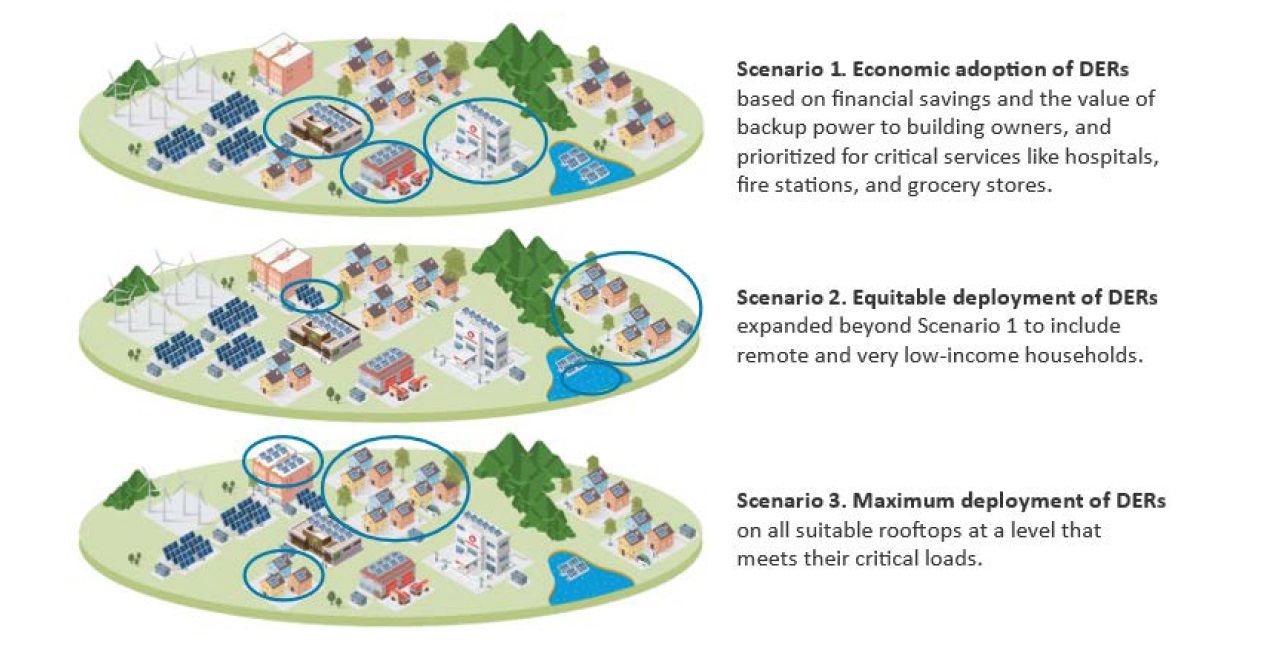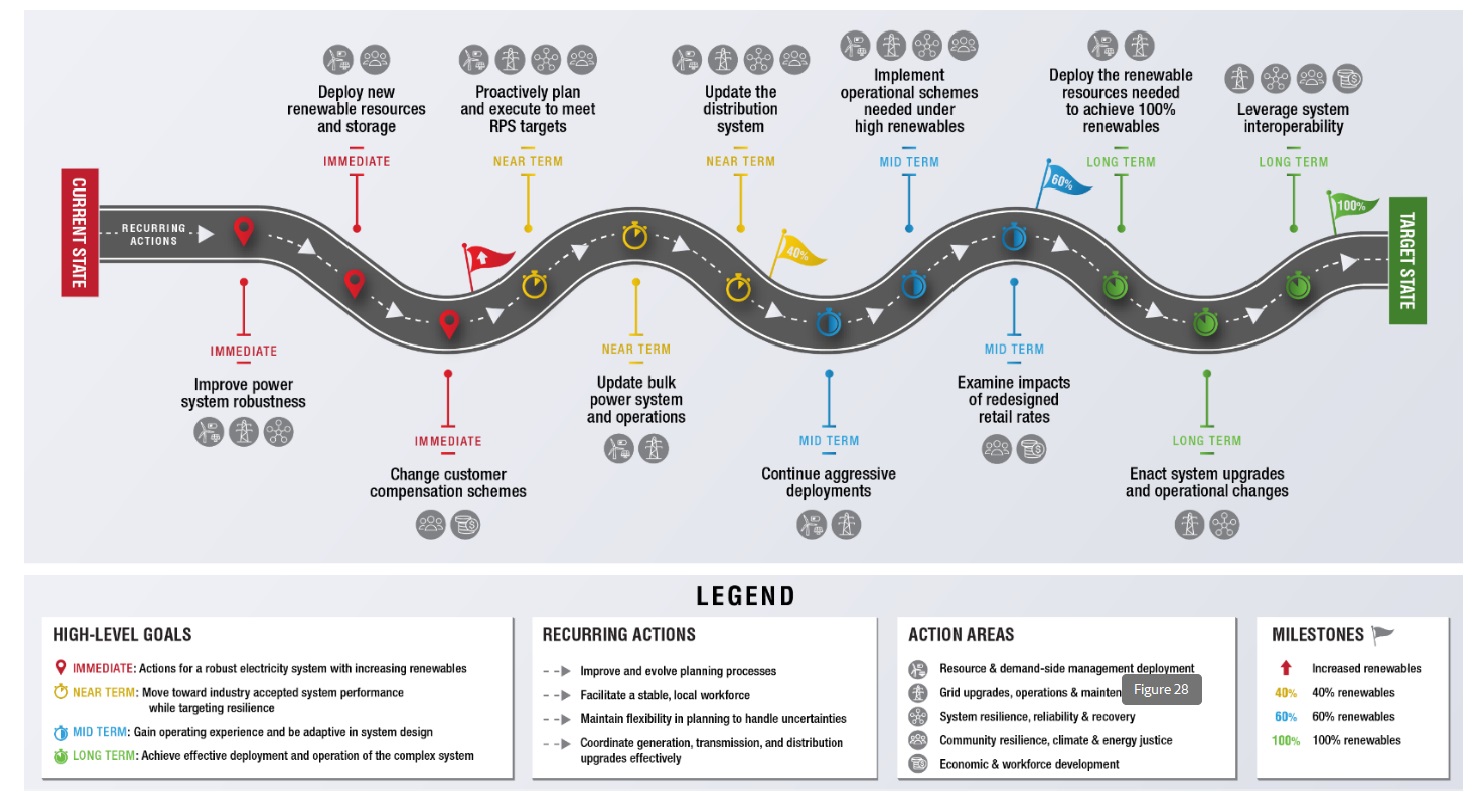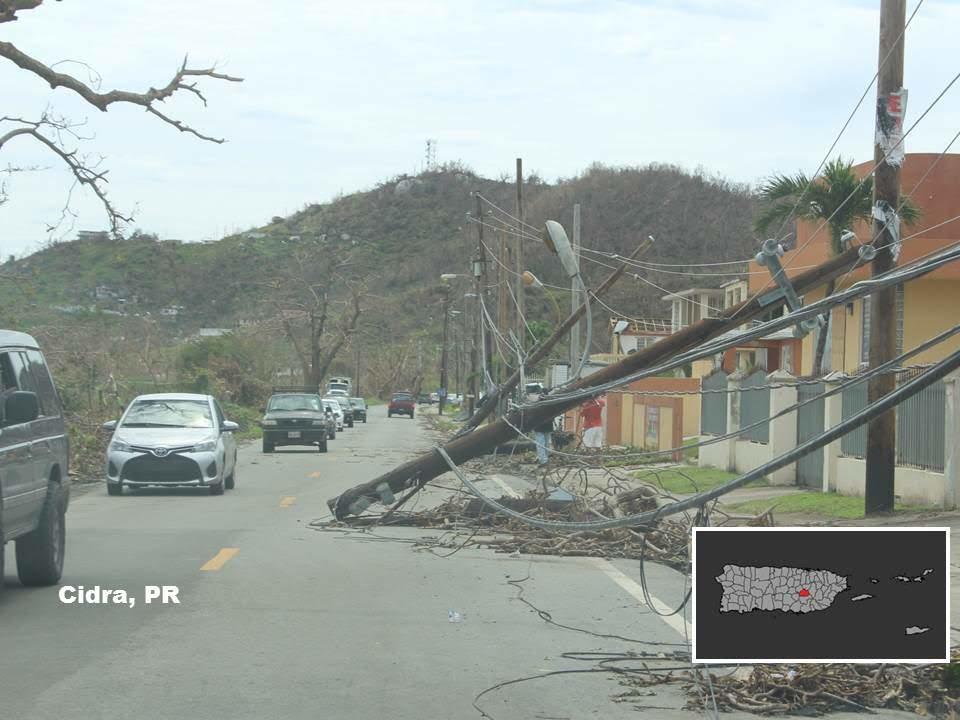in 2017, when back-to-back hurricanes destroyed around 80% of Puerto Rico’s electric grid and resulted in thousands of lives lost, Puerto Rico passed Act 17, a policy to transition to 100% renewable energy by 2050.
Analysis by the National Renewable Energy Laboratory (NREL) found that Puerto Rico has 40GW of solar potential. NREL modeled pathways to the targets set by Puerto Rico’s Act 17: 20% renewable generation by 2022, 40% by 2025, 60% by 2040, and 100% by 2050.
NREL reported that Puerto Rico has 20 GW of utility-scale solar potential, mostly along the coasts, and 20 GW of distributed solar potential. Just 10 GW of solar could meet Puerto Rico’s needs, as estimated by Solar + Energy Storage Association (SESA) president PJ Wilson.
The potential pathways forward in the Puerto Rico Grid Resilience and Transitions to 100% Renewable Energy Study, or PR100, concluded that Puerto Rico can reach its goal of 100% renewable energy by 2050, but there is much work to be done. The researchers created a roadmap outlining near- and long-term actions necessary to move forward toward a renewable and resilient future.
“Over the past year, I’ve visited communities across Puerto Rico, listening to residents’ vision for what a cleaner and more resilient energy future could look like. Now, PR100 is ready to help make them bring those visions to life,” said Jennifer M. Granholm, U.S. Secretary of Energy.
The report identifies three scenarios.

Scenario 1 is defined as the economic adoption of distributed energy resources (DERs) based primarily on bill savings and value of backup power for building owners and Scenario 3 as the maximum deployment of DERs on all suitable rooftops. Scenario 2 lies in between, extending DER adoption to very low-income households (0%–30% of area median income) and those in remote areas who otherwise would not have bought systems. There are also variations to these scenarios, especially when it comes to utility-scale land use, as agricultural land is highly valued in Puerto Rico. There are also variations around electrical load because it’s hard to project that out to 2050.
The report defines implementation actions, which are highly detailed in the PR 100 Final Report, but which are summarized into five actions, with more detail provided in the graphic below:
- Immediate actions to build a more robust electricity system and lay the foundation for high levels of renewable energy
- Mid-term actions to achieve 60% renewable energy to gain operating experience and be adaptive in system design
- Long–term actions on the road to 100% renewable energy where effective deployment and operation of the complex system is achieved
- Recurring actions to continually maintain and improve the system and associated planning processes.

The immediate actions are expected to increase system capacity by about 40% (of renewables) by making urgent repairs to the grid. Part of this step is to also incentivize customers to use batteries in a grid-interactive fashion. The Battery Emergency Demand Response Program piloted by the power company, LUMA, is an example of the start of such an effort.
As resilience is the goal of shoring up the grid and adding renewables, the report emphasizes that best practices must be implemented to ensure that the renewables operate effectively. One suggestion is to operate rooftop PV systems as microgrids, to set up virtual power plants, and to add sensing equipment across the distribution and transmission system to help identify problem areas before outages occur.
The report further identifies ongoing, recurring actions that include involving stakeholders as well as building out a workforce to support the renewable energy systems. An estimated 25,000 jobs will be required for the transition to 100% renewables in Puerto Rico, so support for the development and expansion of job training is imperative.

In summary, the report notes that with the completion of the study, it is now in the hands of those who can implement the findings. The full report can be found here.
This content is protected by copyright and may not be reused. If you want to cooperate with us and would like to reuse some of our content, please contact: editors@pv-magazine.com.









By submitting this form you agree to pv magazine using your data for the purposes of publishing your comment.
Your personal data will only be disclosed or otherwise transmitted to third parties for the purposes of spam filtering or if this is necessary for technical maintenance of the website. Any other transfer to third parties will not take place unless this is justified on the basis of applicable data protection regulations or if pv magazine is legally obliged to do so.
You may revoke this consent at any time with effect for the future, in which case your personal data will be deleted immediately. Otherwise, your data will be deleted if pv magazine has processed your request or the purpose of data storage is fulfilled.
Further information on data privacy can be found in our Data Protection Policy.